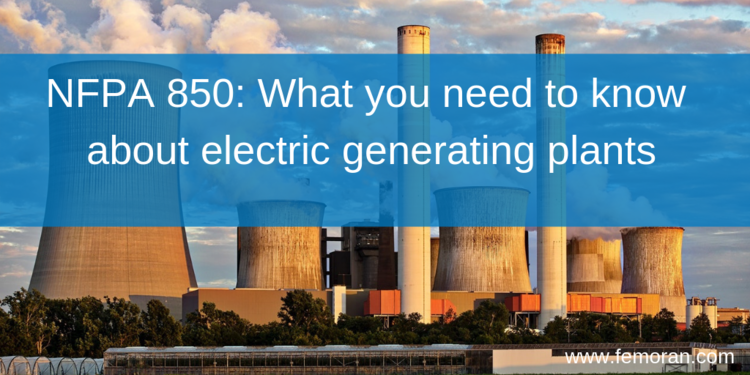
NFPA 850 is the fire protection recommendations for electric generating plants and high voltage direct current converter stations.
We have written about NFPA 850 several times in its connection to gas-fired power plants, coal-fired power plants, and bio-diesel plants. Today, we’re doing an NFPA 850 round-up of fire protection needs for plants.
1) Fire Hazards + Fire Protection – Gas-fired Power Plants
Gas-fired power plants are growing in popularity. Canada has already begun to phase out coal-fired power plants in favor of gas-fired power plants. Gas is less expensive and a cleaner form of fuel than coal. However, with a surge in gas-fired power plants being built, a closer look needs to be taken on the fire hazards within these plants.
In 2010, the Kleen Energy Systems Power Station, a combined cycle gas and oil power plant, had an explosion in the turbine building when natural gas was being purged from the gas line. Six people were killed.
In 2014, the Didcot B Power Station, a gas-fired plant, had a major cooling tower fire. The fire spread from one to three cooling towers. Luckily, no one was injured. However, it does serve as an example of what can happen in gas-fired power plants and the need for proper fire protection.
Fire hazards are abundant in gas-fired power plants. With natural gas, lube oil, and combustible materials throughout these plants, a small spark can grow into an inferno.
Gas-fired power is on its way to becoming one of the biggest producers of power in North America. With less than 20% of the global coal-fired capacity residing in North America, gas is bringing up the rear and establishing itself as a contender for king of energy production. But what are the fire hazards in these plants?
2) Coal-fired Power Plants: Additional Hazards Require Additional Solutions
Powder River Basin (PRB) coal has given coal-fired plants an environmentally conscious, inexpensive alternative to traditional bituminous coal since the 1980s. The lower NOx and SO2 in PRB coal reduced power plant emissions, decreasing pollution, and appeasing the 1990 Clean Air Act. At the same time, the low cost and availability made PRB coal not only a viable option, but a fuel of choice. While PRB coal was the predominant emission efficient energy source in 1990, in 2012, it no longer reins as the most environmentally friendly fuel. With the current government crack-down on coal-fired power plants, the existing plants will likely be the last.
Coal-fired power plants are extremely volatile. After all, there is a reason the industry saying is, “It isn’t if a fire occurs, but when.” With the prospect of aging coal-fired power plants and their propensity for combustion, it is essential to understand their fire hazards and insure the fire protection preparedness of coal-fired power plants with extensive fire protection solutions.
3) Converting Power Plant Fuel Sources – What hazards will arise?
Followers of the power industry are well aware of the EPA regulations pushing coal power into the history books. Because of this, many plants are converting fuel sources. There are several options for fueling plants: solar, biofuel, and combined-cycle – but the fuel of the moment is natural gas. With its current minimal cost and clean burning, it is a fuel that government regulators and plant managers can agree on. However, the process of converting fuels can be hazardous. There are numerous fire protection considerations that need to be made before, during, and after the conversion.
Conclusion
NFPA 850 was designed to protect most plants from fire (exceptions are nuclear, hydro, and fuel cell plants). We have broken down the code into easy-to-understand language for common power plants, so plant engineers and safety managers can understand exactly what they need to keep their plants protected.
Contact F.E. Moran Special Hazard Systems directly to learn more.
 February 24, 2019
February 24, 2019